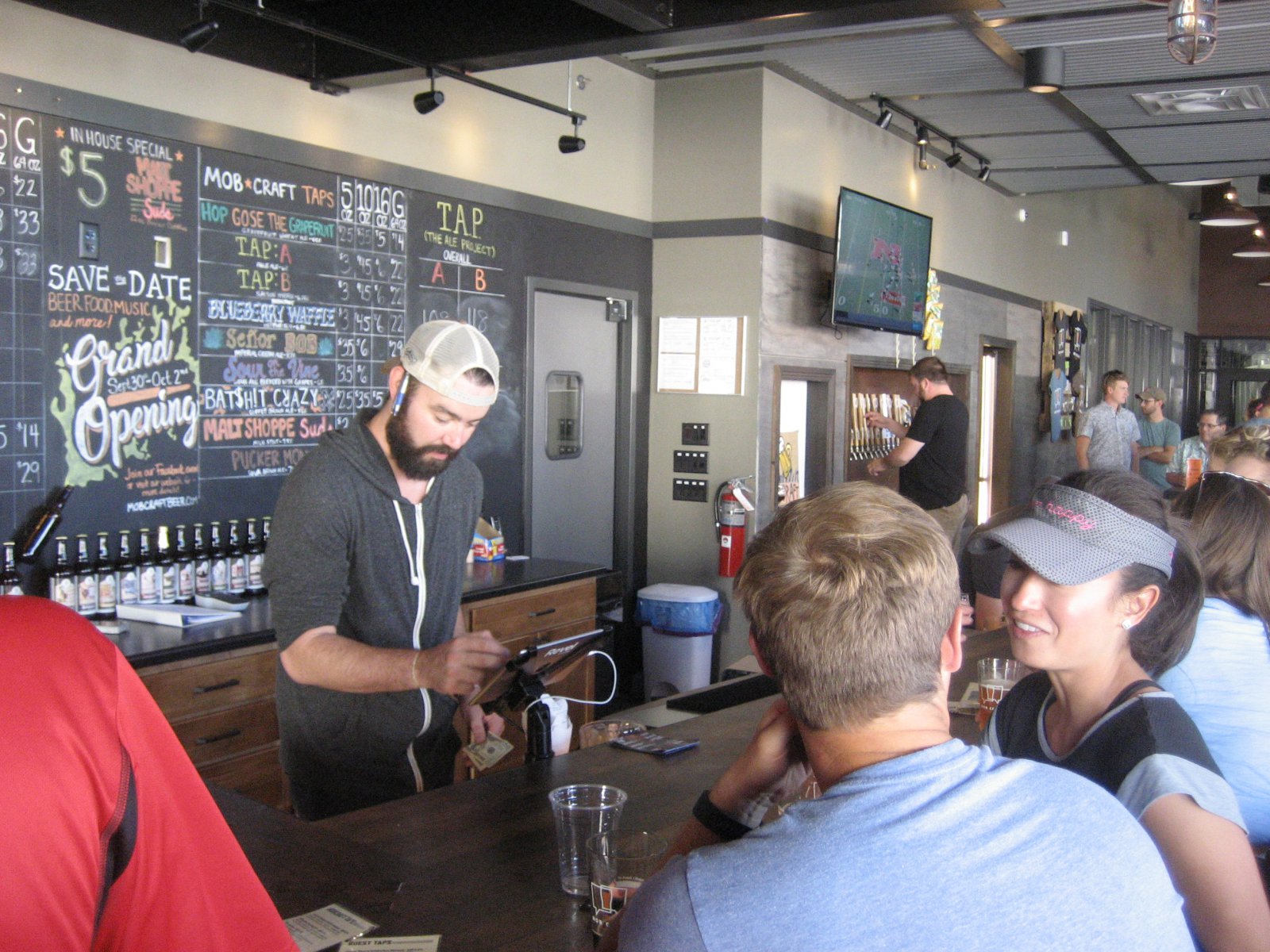State’s Craft Brewers Confront Higher Costs
Higher cost for barley and shortage of truck drivers, but NA beer sales a bright spot.
In recent months, Henry Schwartz from MobCraft Beer said it feels like brewery customers have hit a “hard reset” on their pre-pandemic habits.
“We’ve seen a lot of new customers that have shown up, maybe because their old watering hole went out of business or they just thought, ‘Well, let’s try something new.’ So we’ve definitely seen a big shift in consumer habits,” Schwartz said.
But Schwartz said the success has been dampened some by increased prices for everything from packaging to barley and hops.
“We have seen cost increases kind of across the board on all of our raw materials,” he said.
Like most industries, craft breweries across the country have had to figure out how to deal with the impacts of inflation and a supply chain still working through the ripple effects of pandemic-related changes.
Bart Watson, chief economist for the Brewers Association, said breweries are still seeing supply disruptions in the products that they rely on, like carbon dioxide. Last summer, CO2 prices spiked in part because there was a limited supply available.
Watson said breweries are also feeling impacts from climate change on the crops that make up beer. He said drought in the U.S. and Canada led to a poor barley crop in 2021, which caused the price of malt to increase. Grain markets have also been impacted in 2022 by the war in Ukraine.
“We had a better ’22 crop, more kind of in line with 10-year averages,” he said. “So we’re in no worry of running out of barley or malt anytime soon. But we’re still not in the place where we’ve moved back into surplus.”
Given these disruptions, Watson said it’s a challenging time for the craft beer industry and the future of the market is still uncertain. He expects many brewers will continue to struggle for another year or two.
“The market was already growing a little bit more slowly — it’s a maturing market,” he said. “We certainly see distribution being really challenging right now. And with rising cost inputs, that means a lot of brewers are selling the same amount of beer and making less on it, you know, even with the price increases that many brewers have brought.”
“The vast majority of sales of non-alcoholic beer come from people who drink beverage alcohol,” he said. “I’m always watching it this time of year, I’ll say, because Dry January is clearly a place where we see more people interested in the category.”
He said breweries are doing a better job keeping those customers throughout the year as they improve the flavor and variety of NA beers offered.
Watson said one company that’s a standout nationally for NA beer is contract beverage company Octopi in Waunakee and the line of non-alcoholic beers they make for the company Untitled Art. Isaac Showaki, president of Octopi, said he originally invested in the special equipment needed to make non-alcoholic beer around five years ago. But Showaki said at first, they mainly used the equipment to make hard seltzers as they exploded in popularity.
Showaki thinks consumers are becoming more conscious of the negative health impacts that beer can have, but they don’t want to sacrifice the social aspect of sharing a drink with friends.
He said NA beers are the first thing craft breweries ask him about, and he thinks the market will continue to grow for the next two to three years.
But even with this bright spot in the market, Showaki said the growth doesn’t make up for the increased costs in the craft beer industry.
“It’s much more competitive. There’s way too many brands,” he said. “The consumer, I think, has less income right now to just buy stuff than the last three years. So it’s been a pretty tough environment I would say the last 12 months, and it looks like it’s going to be a pretty tough next 12 months going forward.”
Listen to the WPR report here.
Higher costs are impacting Wisconsin breweries. Some industry leaders don’t expect that to change in 2023. was originally published by Wisconsin Public Radio.
If you think stories like this are important, become a member of Urban Milwaukee and help support real, independent journalism. Plus you get some cool added benefits.





















